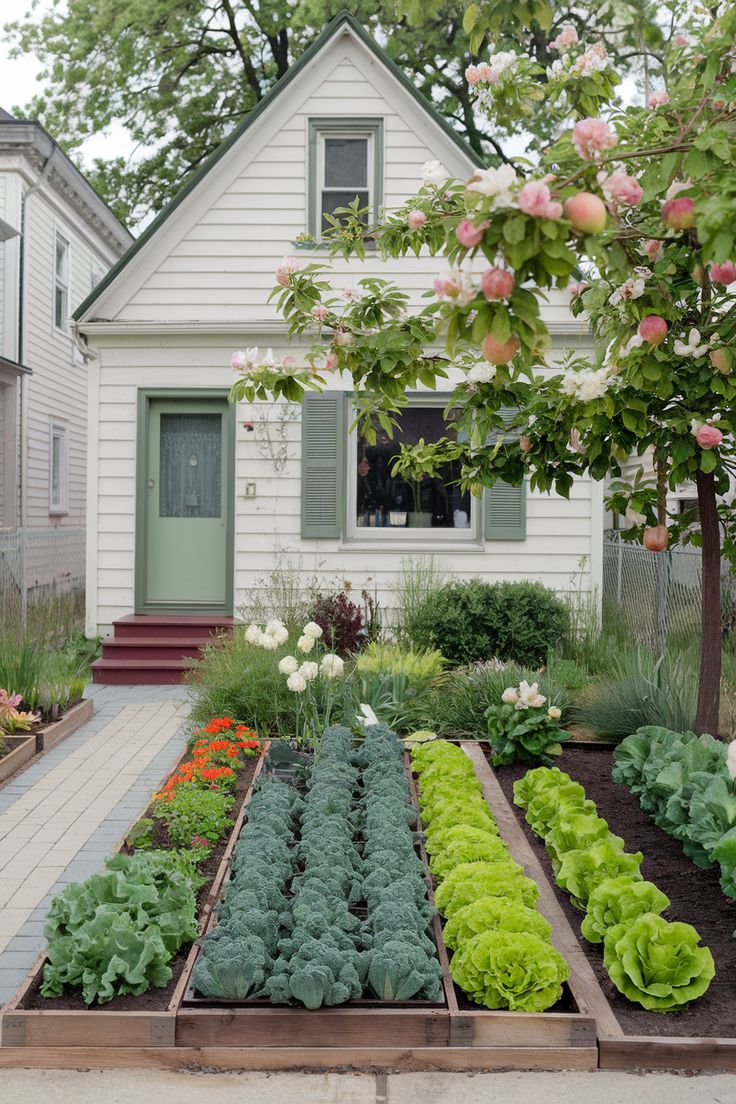For a beginner, the rhythm of a garden can seem mysterious. Knowing what to plant and when is a crucial part of a successful harvest. While many plants can be started in spring, a great gardener understands that the season dictates the crop. This guide will walk you through a start your own backyard garden simple, year-long planting schedule, helping you make the most of your backyard garden no matter the time of year.
The Importance of Seasonal Planting
Every plant has a preferred climate. Some thrive in the cool, moist conditions of spring and fall, while others require the intense heat and sunlight of summer. Planting at the right time ensures your plants have the best possible chance to grow, mature, and produce a bountiful harvest.
Spring: The Main Planting Season (March – May)
Spring is the time of renewal and is the most active planting season for most of the Northern Hemisphere. The soil thaws, and the air warms, providing ideal conditions for a variety of crops.
- What to Plant: This is the perfect time to plant cool-weather vegetables directly from seed.
- Lettuce & Spinach: Fast-growing leafy greens that thrive in the cool, moist conditions of spring.
- Radishes: The ultimate quick-win for a new gardener, ready to harvest in as little as three weeks.
- Peas: A classic spring vegetable that loves to climb and produces a sweet harvest.
- Carrots: Plant these root vegetables directly from seed in loose, well-drained soil.
- A Spring Bonus: This is also the time to start seeds indoors for your summer crops, like tomatoes and peppers, giving them a head start before the last frost.
Summer: The Season of Heat and Harvest (June – August)
Summer is for the heat-loving plants that need plenty of sun to ripen. As of early August, you’re in the peak of the growing season. While it might be too late to start some long-growing crops from seed, you can still plant quick-maturing vegetables.
- What to Plant: Focus on vegetables that thrive in the heat.
- Tomatoes: Cherry tomatoes are a great choice for beginners, as they are hardy and prolific. If you are planting in August, look for fast-growing varieties.
- Zucchini: Known for their abundant harvests, these plants will produce squash throughout the summer.
- Green Beans: Both bush and pole varieties are low-maintenance and will provide a steady supply of beans.
- Cucumbers: A classic summer vegetable that is perfect for salads and pickling.
- Looking Ahead: Early August is also a great time to plant some fast-growing cool-weather crops, like lettuce and radishes, for a quick harvest before the weather turns.
Autumn: The Second Harvest (September – November)
As temperatures begin to drop, you can still enjoy a productive garden season. Autumn is a great time to plant a second round of cool-weather crops.
- What to Plant:
- Garlic: Plant individual cloves in the fall for a harvest the following summer.
- Leafy Greens: Many leafy greens, like kale and Swiss chard, can be planted in late summer for a fall harvest.
- Broccoli & Cabbage: These vegetables can be planted in late summer and will mature in the cool temperatures of fall.
- Preparation for Winter: As the first frost approaches, this is the time to clear your garden beds of old plants, add a fresh layer of compost, and cover the beds with mulch to prepare the soil for winter.
Winter: The Season of Rest (December – February)
For most of the Northern Hemisphere, winter is a dormant season for gardening. The ground is often frozen, and most plants are not actively growing.
- What to Do: This is the perfect time to plan your next garden.
- Reflect on the Past Season: Think about what worked and what didn’t.
- Order Seeds: Browse seed catalogs and online stores to order seeds for your upcoming spring planting.
- Prepare Tools: Clean, sharpen, and repair your gardening tools so they are ready to go when spring arrives.
By understanding the simple rhythm of the seasons, you can make your beginner garden a success year-round. This cyclical process is a rewarding journey that will teach you something new every season.
